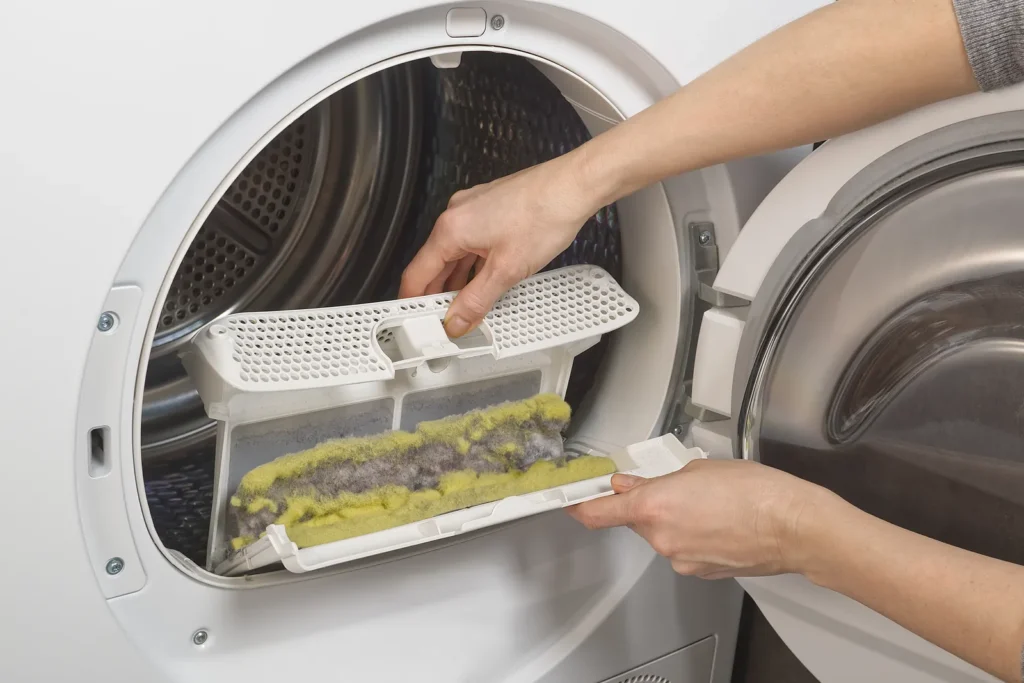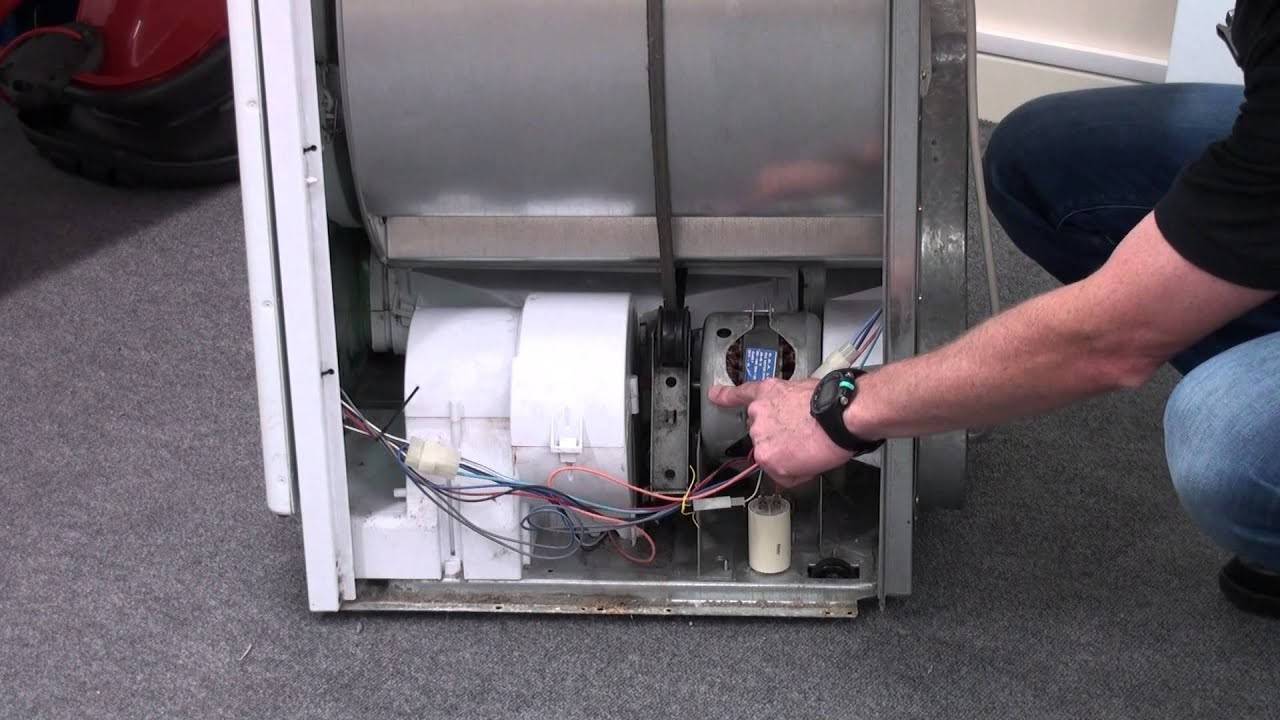A malfunctioning Hotpoint dryer that isn’t producing heat can be a source of frustration. The inability to dry your clothes effectively can disrupt your daily routine. In this comprehensive guide, we will walk you through the common reasons behind a Hotpoint dryer not heating and provide step-by-step solutions to get your dryer back to optimal performance.
Common Causes of a Hotpoint Dryer Not Heating
Before diving into specific troubleshooting steps, let’s explore some common causes behind a Hotpoint dryer not producing heat:
- Blocked or restricted airflow
- Faulty heating element
- Malfunctioning thermal fuse
- Damaged cycling thermostat
- Igniter problems
- Gas valve solenoid issues
- Incorrect dryer settings
- Electrical supply problems
Understanding these potential causes will help you diagnose and resolve the issue effectively.
Check the Power Supply

Sometimes, a Hotpoint dryer not heating may be due to a power supply issue. Start by ensuring the dryer is properly plugged in and that the circuit breaker is not tripped. A simple check of the power source can often solve the problem.
Ensure Proper Dryer Settings
Your Hotpoint dryer may not heat if the settings are incorrect. Make sure you’ve selected the appropriate drying cycle and heat level. Consult your dryer’s user manual for guidance on the correct settings for your specific model.
Examine the Heating Element
The heating element in a dryer is an essential element responsible for the production of heat. If the heating element is defective, the dryer will not generate heat. To check it:
- Disconnect the dryer from the power source.
- Access the heating element, typically located behind the dryer drum.
- Inspect for visible damage or disconnection.
- If damaged, replace the heating element.
Inspect the Thermal Fuse

The thermal fuse is a safety feature that can blow if the dryer overheats. A blown thermal fuse can cause your Hotpoint dryer to stop heating. To check and replace it if needed:
- Disconnect the dryer from the power source.
- Locate the thermal fuse, typically near the heating element.
- A multi meter can be used to verify the continuity of the fuse.
- In the event of a blown fuse a new fuse should be installed.
Verify the Cycling Thermostat
The cycling thermostat regulates the temperature inside the dryer. If it is malfunctioning it may not allow the dryer to reach the desired heat level. To inspect and replace the cycling thermostat:
- Disconnect the dryer from the power source.
- Locate the cycling thermostat, often near the heating element.
- Test it for continuity using a multimeter.
- If it fails the continuity test, replace the thermostat.
Clean the Dryer Vent and Duct

Blocked dryer vents or ducts can impede proper airflow, causing your Hotpoint dryer to overheat and not heat effectively. To resolve this issue:
- Disconnect the dryer from the power source.
- Clean the dryer vent and duct thoroughly.
- Ensure there are no obstructions in the airflow path.
Troubleshoot the Igniter
The igniter of a Hotpoint dryer that is powered by gas is essential for the ignition of the gas to generate heat. A defective igniter will not ignite the gas, leading to a lack of heat. To inspect and replace the igniter:
- Disconnect the dryer from the power source.
- Locate the igniter, usually near the gas valve.
- Test it with a multi meter for continuity.
- If it doesn’t have continuity, replace the igniter.
Evaluate the Gas Valve Solenoid
For gas dryers, the gas valve solenoids control the flow of gas. If they’re malfunctioning, your dryer won’t heat properly. To check and replace the solenoids:
- Disconnect the dryer from the power source.
- Locate the gas valve solenoids, typically near the gas valve.
- Test them for continuity using a multimeter.
- If they fail the continuity test, replace the solenoids.
Frequently Asked Questions (FAQs)
Why is my Hotpoint dryer not heating up at all?
The inability of a Hotpoint dryer to heat up can be caused by a variety of factors including a defective heating element a faulty thermal fuse or an electrical issue. Our troubleshooting guide provides step-by-step instructions on how to diagnose and resolve this issue.
Can I fix my Hotpoint dryer not heating issue on my own?
Our troubleshooting guide outlines a number of common Hotpoint dryer issues that can cause the dryer to cease heating. However it is important to note that if you are uncertain about any part of the repair procedure or do not possess the necessary skills and equipment it is advisable to seek professional advice to avoid any potential safety hazards.
What should I do if my Hotpoint dryer is electric and not producing heat?
Electric Hotpoint dryers may have issues with the heating element, thermal fuse, or cycling thermostat. Our troubleshooting guide provides steps to check and replace these components if necessary.
My Hotpoint dryer is gas-powered and not heating. What could be the problem?
Gas dryers rely on components like the igniter and gas valve solenoids. If your gas dryer is not heating, follow the steps in our guide to inspect and potentially replace the igniter or solenoids if they are defective.
Are there any safety precautions I should take when troubleshooting my Hotpoint dryer?
Yes, safety is essential. Always disconnect your dryer from the power source before performing any inspections or replacements. If you encounter a problem you are uncomfortable dealing with, seek professional assistance to prevent potential hazards.
How can I prevent my Hotpoint dryer from experiencing heating issues in the future?
Regular maintenance can help prevent heating issues. Keep the lint screen and ducts clean, ensure proper airflow, and avoid overloading the dryer. Additionally, following the manufacturer’s guidelines for usage and maintenance is crucial.
Can I find replacement parts for my Hotpoint dryer easily?
Yes, replacement parts for Hotpoint dryers are often available through authorized dealers, appliance repair shops, or online retailers. Ensure you have the correct model number and part details when ordering to ensure compatibility.
Conclusion
A Hotpoint dryer not heating can be caused by various factors, including power supply issues, incorrect settings, malfunctioning components like the heating element, thermal fuse, cycling thermostat, igniter, or gas valve solenoids, as well as blocked dryer vents and ducts. By following the steps outlined in this guide, you can troubleshoot and address the issue, ensuring your Hotpoint dryer operates efficiently and keeps your clothes dry and warm.
It is important to ensure the safety of your family by ensuring that your dryer is disconnected from the power supply prior to any inspection or replacement. If any aspect of troubleshooting is not clear to you it is recommended to seek professional advice to prevent further harm or safety hazards.

